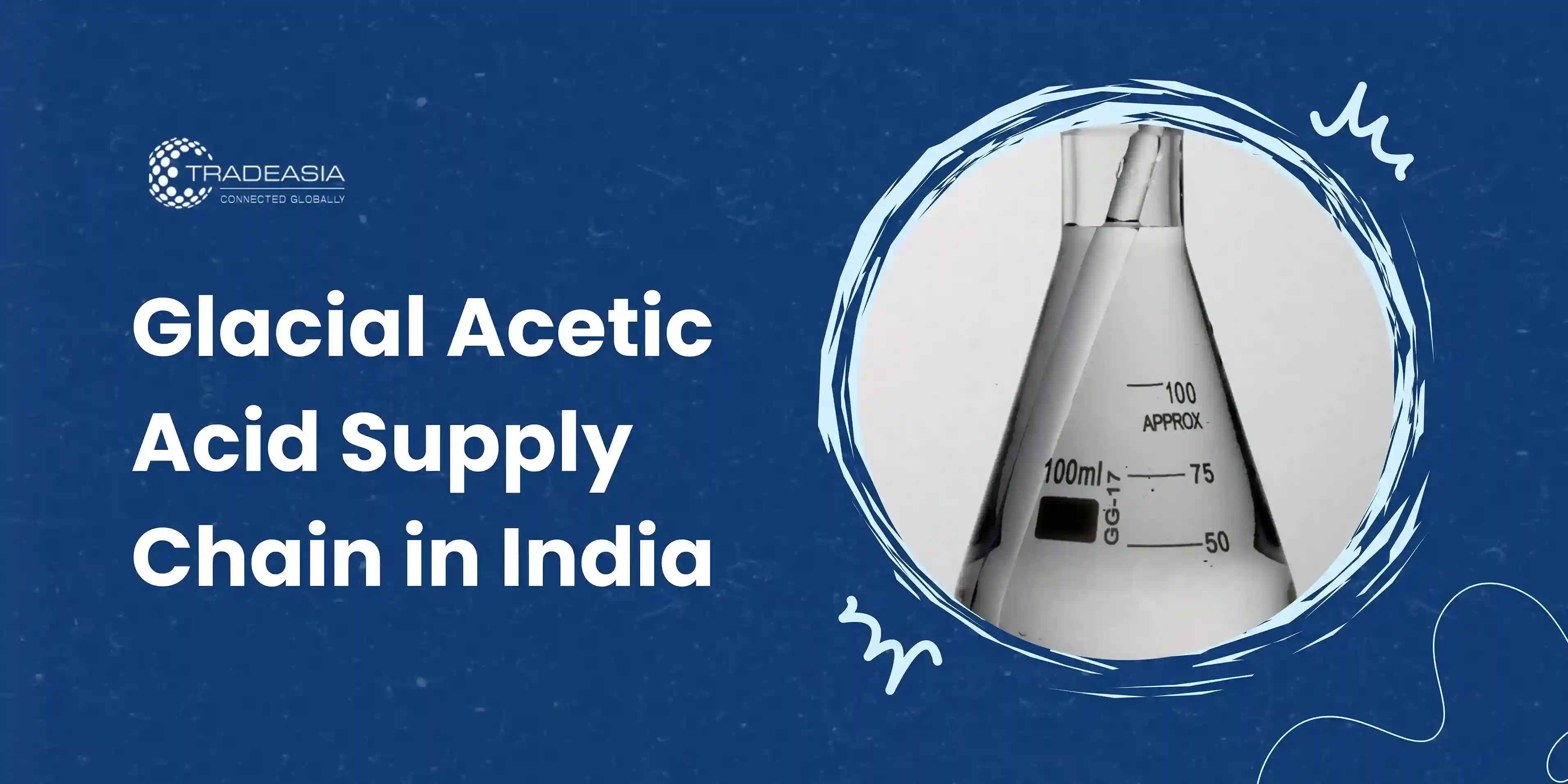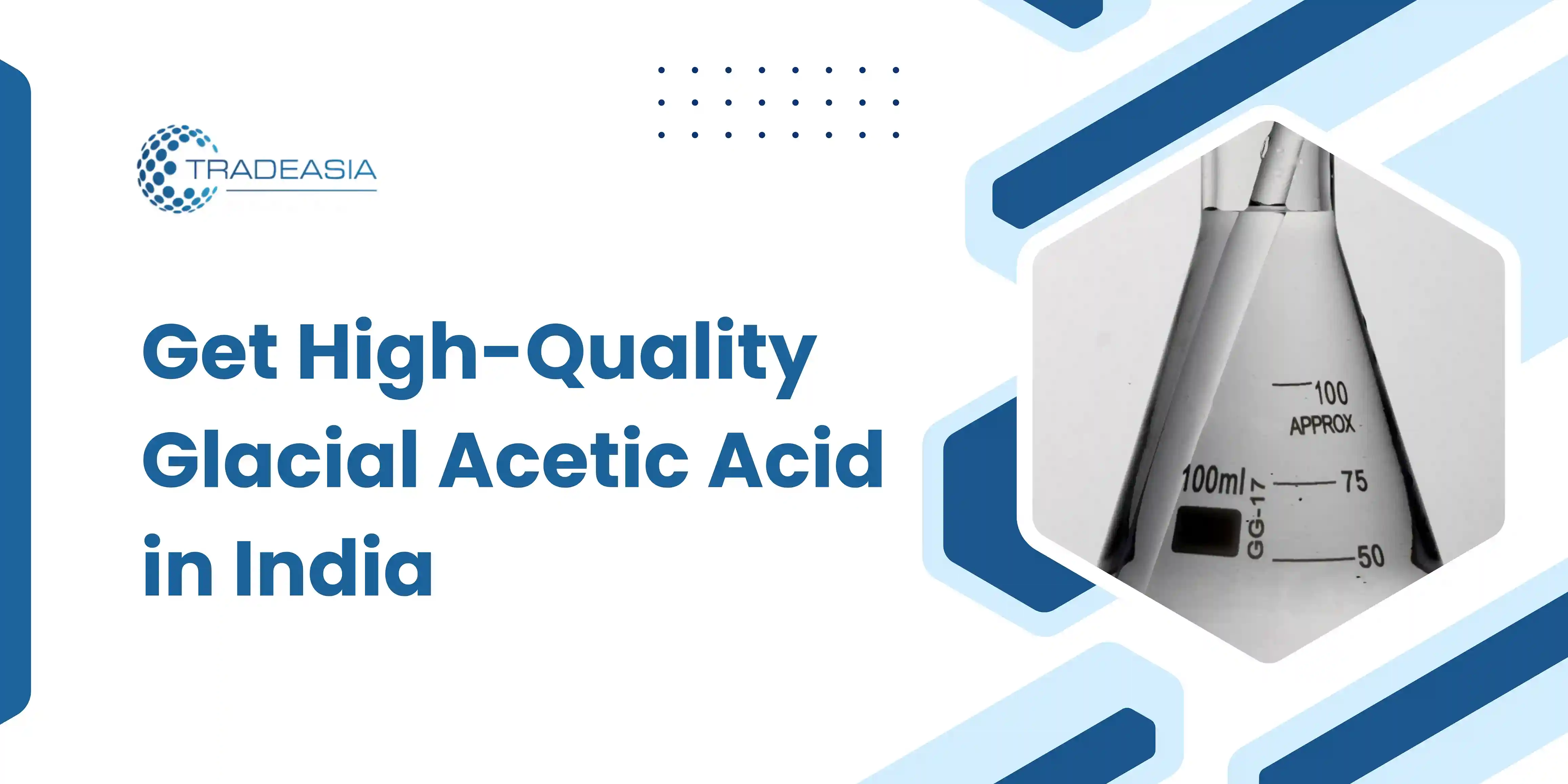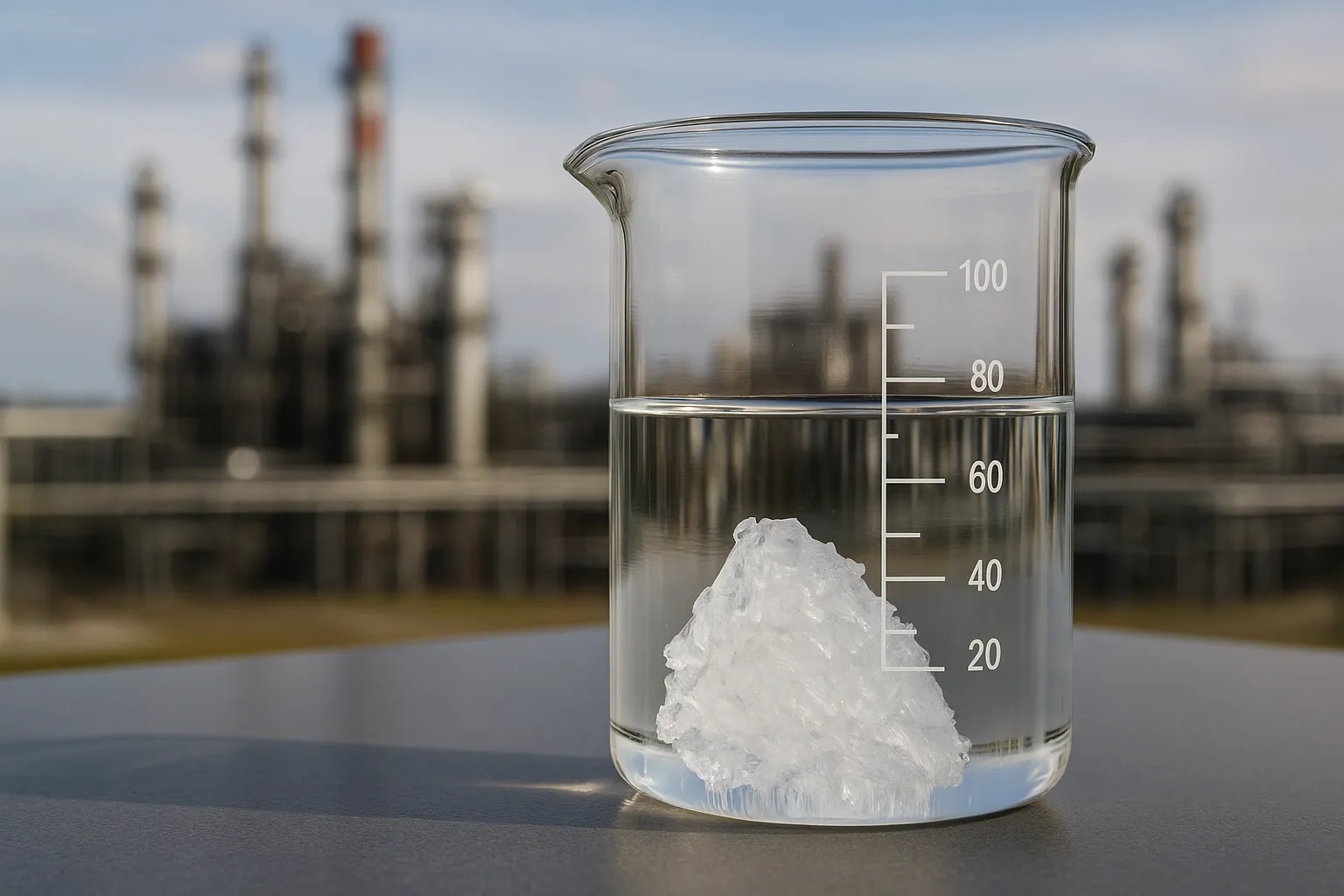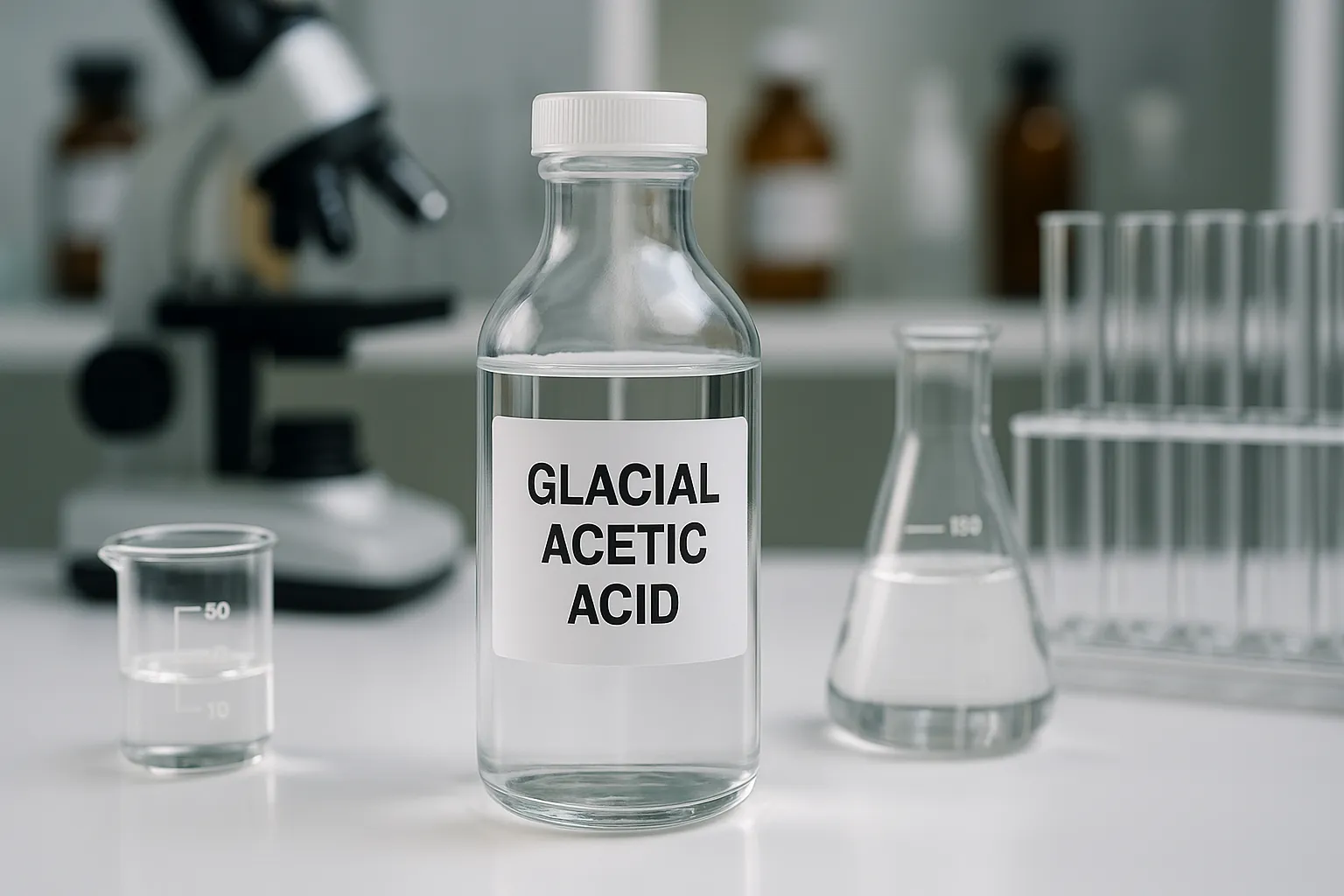Introduction
Glacial acetic acid is a powerful chemical widely used in textiles, plastics, food processing, and pharmaceuticals. While it serves as an essential raw material, its highly corrosive nature makes it potentially hazardous when improperly handled. For industries working with glacial acetic acid in India, ensuring safety procedures are in place is not just a regulatory obligation—it’s a critical step in maintaining worker health and avoiding costly incidents.
The Indian chemical industry has seen a rising demand for glacial acetic acid, driven by manufacturing growth across multiple sectors. This demand increases the responsibility for companies to uphold robust safety and storage measures. Industrial accidents involving corrosive chemicals can lead to long-term consequences, both legally and reputationally.
Employers must train workers to respect the hazards associated with this substance. With adequate knowledge and the right practices, glacial acetic acid can be managed safely without interrupting production or endangering staff. This article presents key recommendations for safe handling and storage of glacial acetic acid to protect people, equipment, and the environment.
To support safer operations, companies are also encouraged to procure glacial acetic acid only from verified sources like Tradeasia International, which ensures product quality and provides supporting safety documentation.
Understanding Glacial Acetic Acid and Its Hazards
Glacial acetic acid is the concentrated, water-free version of acetic acid, typically containing over 99% purity. It appears as a clear, colorless liquid with a pungent, vinegar-like odor and freezes around 16.6°C, forming crystalline solids at room temperature. Despite its appearance, it is a highly corrosive and volatile substance.
The chemical’s corrosive nature can damage the skin, eyes, and respiratory system upon contact or inhalation. The Occupational Safety and Health Administration (OSHA) and similar Indian safety regulations classify it as a hazardous material. According to the CDC NIOSH guidelines, exposure to its vapors can cause coughing, shortness of breath, and throat irritation, while skin exposure can result in burns or severe irritation.
Industries that work with glacial acetic acid need to understand its reactivity as well. It can react violently with strong oxidizers, metals, and bases, which makes improper storage a significant fire or explosion hazard. This risk emphasizes the need for tight process controls in production environments.
Using safety data sheets (SDS) and technical specifications from reliable suppliers such as Tradeasia ensures that handlers are aware of these hazards and can implement the appropriate measures to mitigate them in daily operations.
Personal Protective Equipment (PPE) and Exposure Controls
Personal Protective Equipment (PPE) forms the first line of defense when handling glacial acetic acid. Chemical-resistant gloves made from materials like neoprene or butyl rubber are essential to prevent skin exposure. Safety goggles with side shields or full-face shields must be worn at all times to protect the eyes from splashes.
Inhalation risks are also serious. Adequate ventilation systems such as local exhaust hoods and chemical fume extractors should be installed to keep vapor concentrations below permissible exposure limits. In some high-concentration environments, workers should use NIOSH-approved respirators rated for acid vapors. These controls significantly reduce health risks, especially in enclosed or high-temperature operations.
Protective clothing, such as lab coats, aprons, and chemical-resistant boots, offers additional protection against spills. All protective gear must be inspected regularly and replaced when damaged to maintain effectiveness. According to guidelines by the Indian Chemical Council (ICC), PPE compliance is critical for meeting industrial safety standards.
Employees must also be trained to use PPE correctly and consistently. Periodic refresher sessions help keep awareness high and reduce the likelihood of negligence. Proper equipment and training go hand-in-hand with safe chemical handling and should be included in any industrial safety program.
Safe Handling Procedures in Industrial Settings
Safe handling starts with comprehensive training. Workers must understand the chemical’s properties, associated risks, and the correct handling procedures. Handling glacial acetic acid should only occur in designated areas with access to emergency showers, eyewash stations, and ventilation.
Transfer of glacial acetic acid from drums or containers must be done using compatible, corrosion-resistant tools and closed systems to minimize vapor release. Never use aluminum or galvanized containers, as the acid reacts with these metals. Instead, high-density polyethylene (HDPE) or stainless steel equipment is recommended.
Operators must follow a strict no-food/no-drink policy in work areas, and handwashing after handling the substance is mandatory. Spillage during transfer should be immediately reported and cleaned using absorbent neutralizing agents and personal protection. Implementing a buddy system where workers monitor each other during chemical handling can further enhance safety.
Routine monitoring, risk assessments, and safety drills should be incorporated into the workplace. Proper signage, spill kits, and first-aid measures also need to be readily accessible. Businesses can refer to Tradeasia’s product-specific documentation to align their procedures with international chemical safety practices.
Best Practices for Storage and Spill Management
Glacial acetic acid should be stored in a cool, well-ventilated area away from incompatible substances such as oxidizing agents and bases. The storage containers must be tightly sealed, labeled properly, and kept out of direct sunlight to avoid degradation or pressure buildup. Dedicated chemical storage cabinets or warehouses designed for corrosive materials are highly recommended.
Segregating glacial acetic acid from other chemicals is essential to prevent accidental reactions. Secondary containment (e.g., spill trays) should be used to contain potential leaks. Safety protocols must include regular inspection of storage tanks, containers, and pipelines to detect early signs of corrosion or leakage.
In the event of a spill, workers must follow emergency response procedures immediately. Small spills can be neutralized using sodium bicarbonate or similar absorbents, while larger spills may require professional intervention. Spill kits must be checked regularly to ensure all contents are usable and complete.
Training and preparedness are key components of effective spill management. Each facility should have a chemical emergency response plan, including evacuation routes, MSDS access, and emergency contact points like Tradeasia’s support team for further guidance or replacement orders.
6. Conclusion and Sourcing from Reliable Suppliers
Maintaining safety when handling and storing glacial acetic acid is vital for any industrial operation. Adopting a culture of chemical safety protects employees, prevents property damage, and ensures regulatory compliance. With the proper knowledge, PPE, and procedural adherence, industries can minimize risk and maximize productivity.
Just as important as handling is sourcing. Working with reputable suppliers ensures that you receive high-purity glacial acetic acid accompanied by technical support and comprehensive documentation. Tradeasia International offers verified chemical sourcing, customized logistics, and safety-focused support to help industries in India meet their chemical needs efficiently.
Companies should integrate these safety tips into their standard operating procedures and conduct regular audits to identify areas of improvement. By investing in safety today, they safeguard their operations and secure long-term business sustainability.
For bulk purchase inquiries, technical data sheets, or expert consultation, visit the Tradeasia products page or reach out via our contact page to ensure you're getting the best service and safety assurance in the Indian chemical market.




Leave a Comment